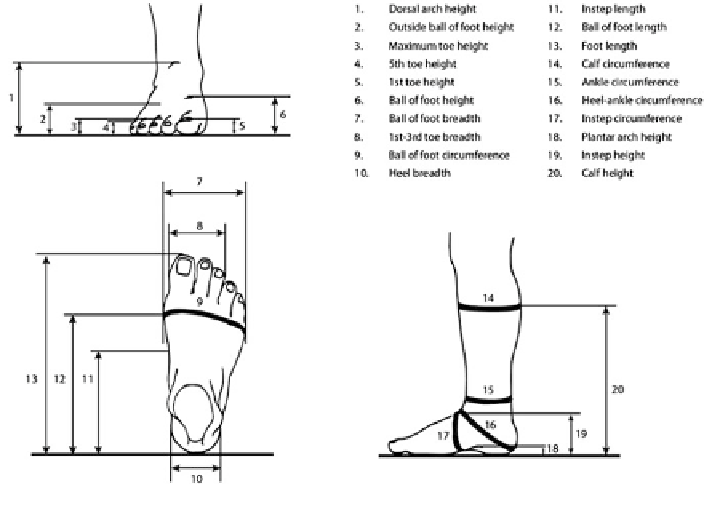Biomedical Engineering Reference
In-Depth Information
Fig. 3
Anthropometric dimensions of the foot and leg
seen in young overweight/obese children are caused by a decreased height of the
medial longitudinal arch (i.e. a flatter foot) and not a thicker midfoot plantar fat
pad (i.e. not a fatter foot).
4.1.2 Effects of Obesity in Young Children on Gait and Plantar
Pressures
To establish whether the structural differences seen in the overweight/obese chil-
dren affected their foot functionality, plantar pressure variables were collected as
the same cohort of preschool children described above walked over a pressure plate.
As anticipated, the overweight/obese children (age = 4.4 ± 0.8 years, body mass
index (BMI) = 18.5 ± 1.3 kg/m
2
) had significantly larger contact areas between
the total foot, heel, midfoot and forefoot areas of the foot and the ground when
walking, compared to the non-overweight children (age = 4.4 ± 0.7 years,
BMI = 15.7 ± 0.7 kg/m
2
)[
53
]. This is again supportive of the initial findings that
the overweight/obese children had broader and flatter feet compared to their leaner
counterparts. The overweight/obese children also generated significantly larger
forces in the total foot, heel, midfoot and forefoot regions of the foot when walking.
This was to be expected because children with a greater body mass should generate
more force than children with a smaller body mass, if all other parameters are
equivalent. The overweight/obese children, however, also displayed significantly

Search WWH ::

Custom Search